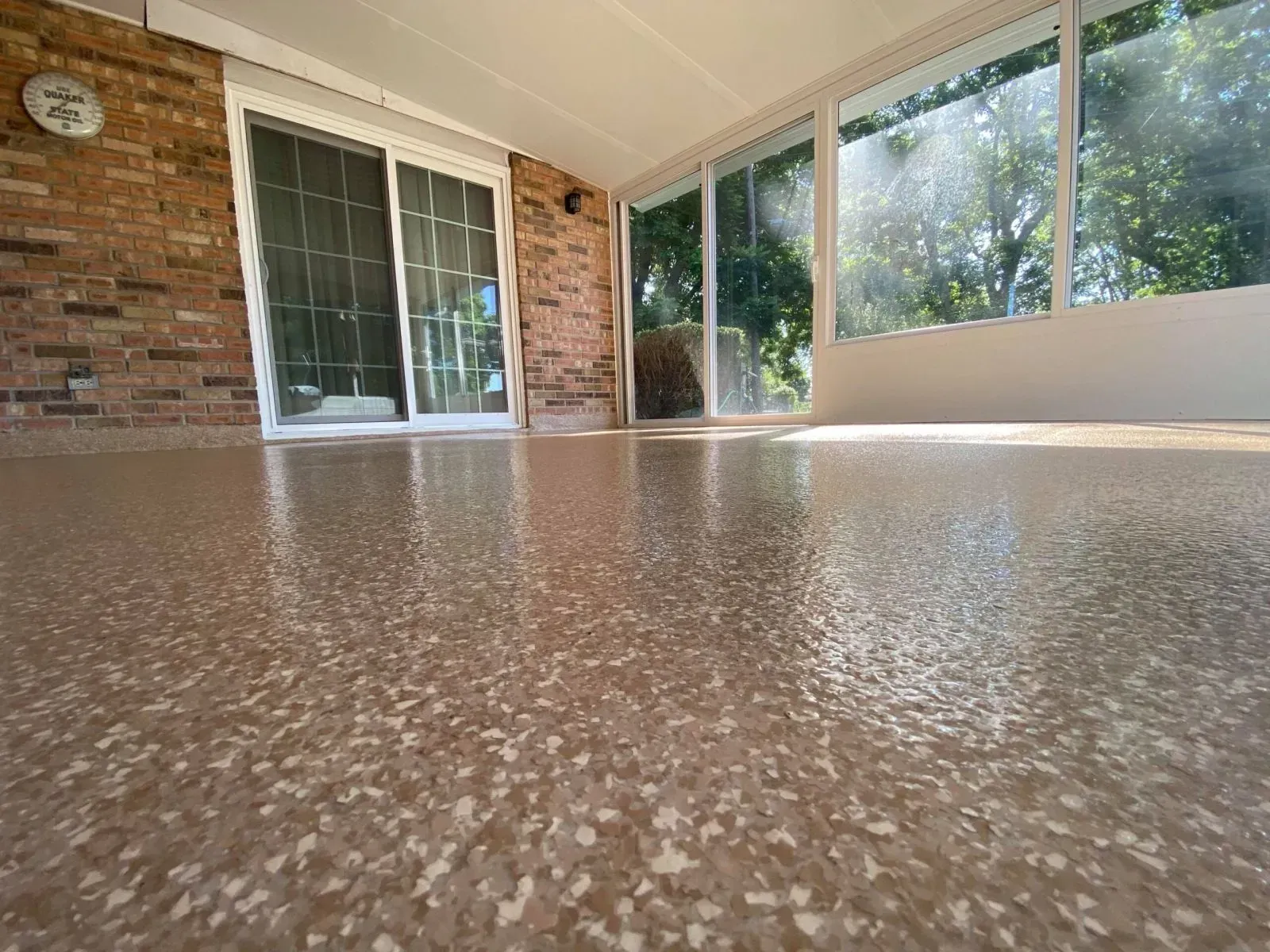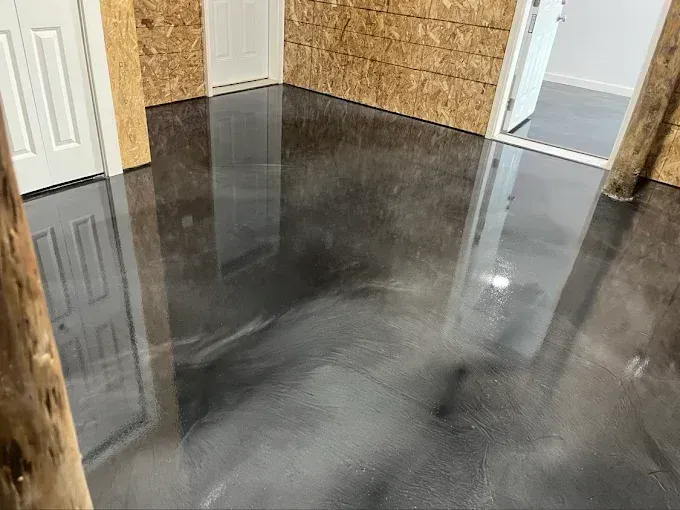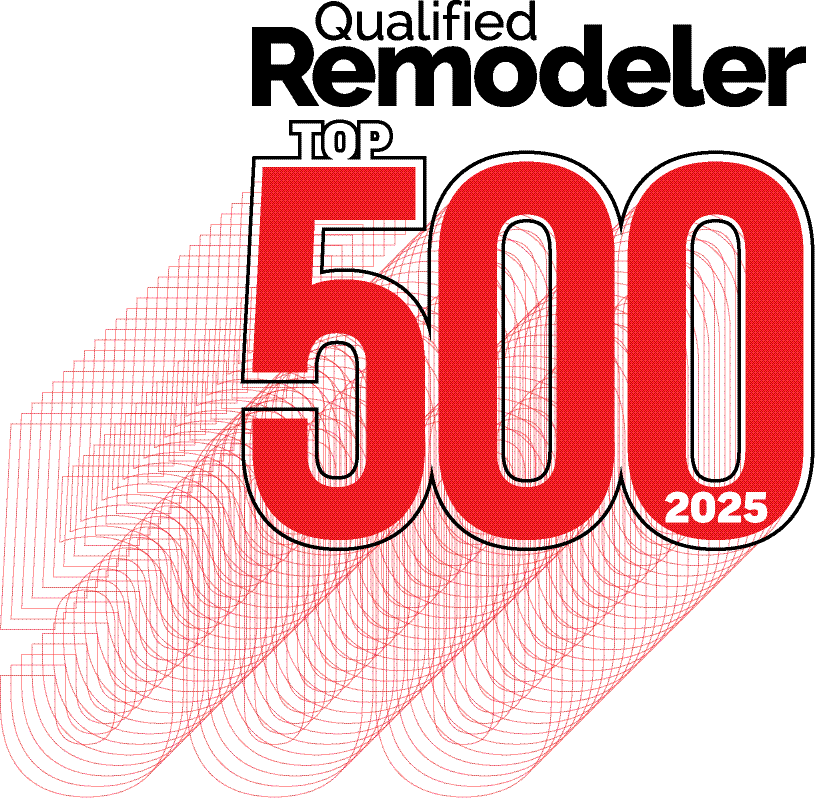What is Polyaspartic Floor Coating?
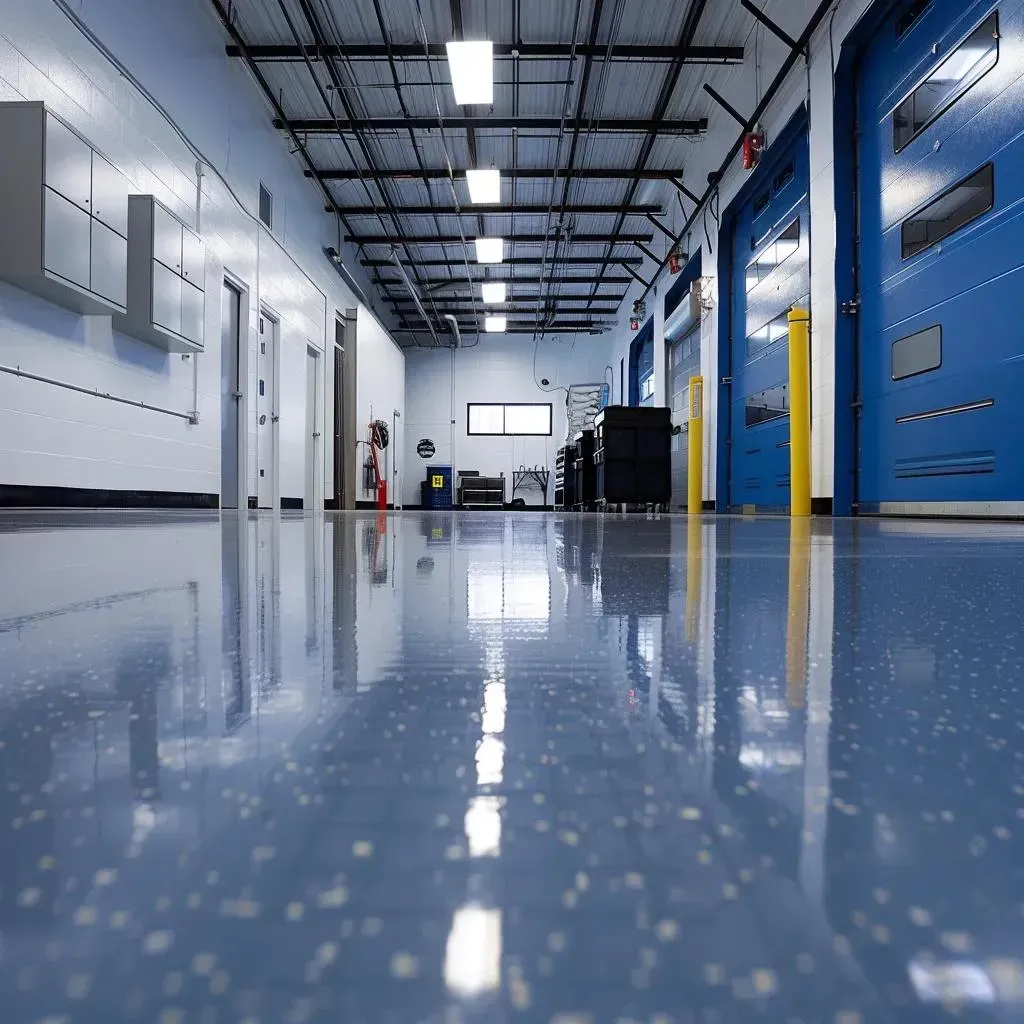
Polyaspartic, epoxy, and polyurea are distinct concrete floor coatings. Polyaspartic excels with rapid cure and excellent UV stability. Epoxy cures slowly and can yellow, while pure polyurea, though extremely fast-curing, is UV sensitive. Polyaspartic, a modified polyurea, offers extended working time for easier application. Though initial material cost may be higher than basic epoxy, its reduced downtime and extended aesthetic lifespan often result in a more favorable total cost of ownership, making lifecycle analysis crucial.
- Polyaspartic: Rapid cure (hours), exceptional abrasion resistance, superior UV stability.
- Epoxy: Moderate UV resistance (potential for yellowing), lower initial material cost but significantly longer downtime.
- Polyurea: Highly flexible, superior tensile strength, extremely fast cure, but can be susceptible to UV degradation.
Common Applications of Polyaspartic Floor Coating
Polyaspartic floor coatings are the premier choice for residential garages, commercial retail spaces, industrial warehouses, and showrooms. Its versatility, chemical resistance, and rapid curing make it ideal for demanding environments. It's an excellent fit for garages and homes, offering quick project completion, decorative options, and superior resistance to oils and tire marks. In commercial and industrial settings, these systems are applied in aisles, loading docks, and production zones facing constant exposure to chemicals and heavy traffic. Meticulous surface preparation, including addressing cracks, profiling, and moisture testing, is non-negotiable for long-lasting results.Browse our Project Gallery for inspiration.
- Garage Floors: Rapid cure times, excellent resistance to oil and automotive fluids.
- Retail and Showrooms: UV-stable, visually appealing finishes designed for high-traffic areas.
- Industrial Warehouses: Superior abrasion and chemical resistance, perfect for forklifts and spill containment.
Polyaspartic Floor Coating Installation Guide
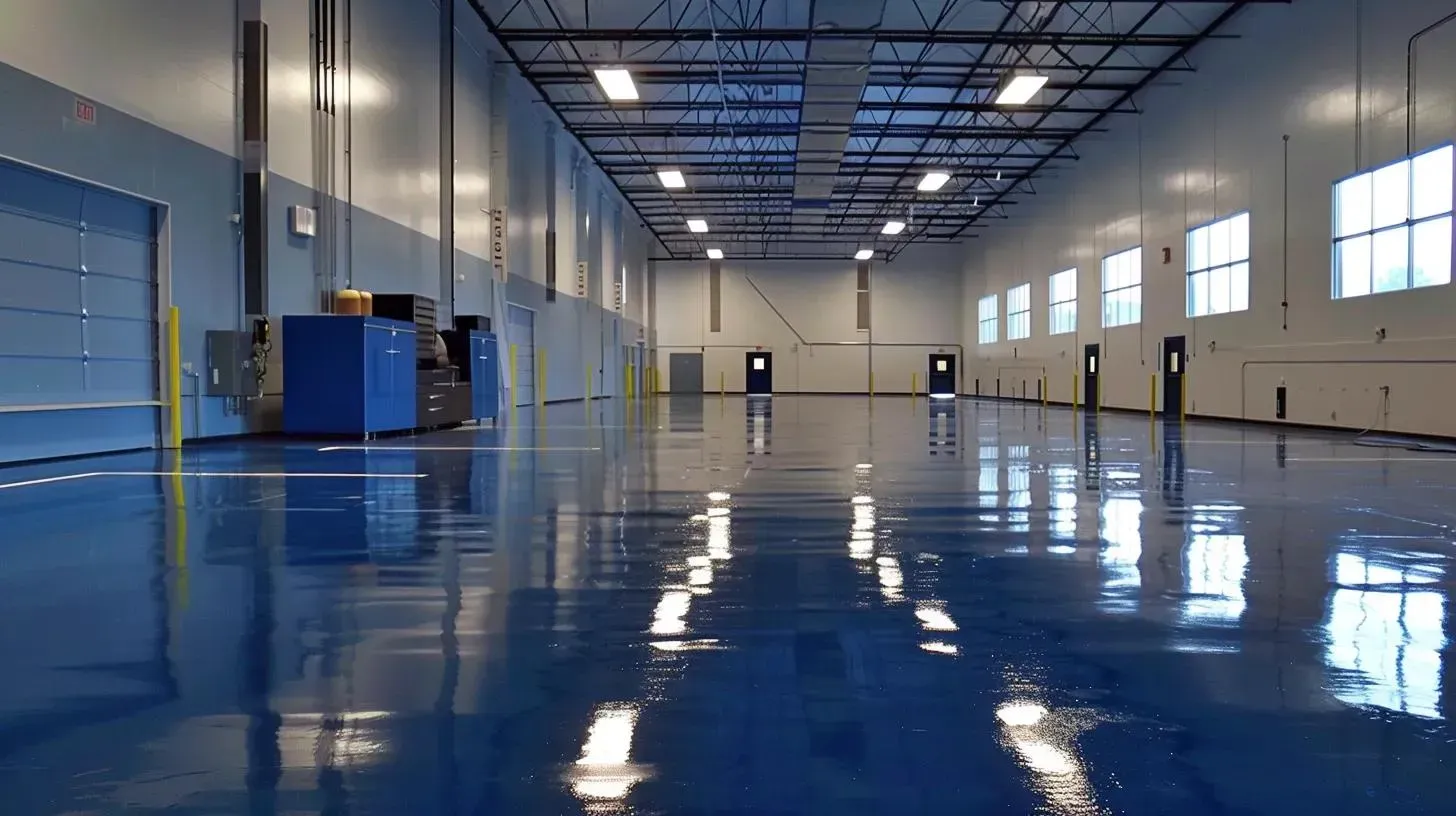
Polyaspartic floor coating is a cutting-edge, fast-curing protective layer for concrete floors. It ensures swift return to service and delivers enduring visual appeal, boasting impressive UV stability and superior abrasion resistance. This durable solution addresses common flooring frustrations like extended downtime and discoloration. We'll explore its properties, installation, applications, and costs.
Key Benefits of Polyaspartic Floor Coating
Polyaspartic coatings leverage aliphatic-modified polyurea chemistry for exceptional UV stability and robust chemical resistance, alongside rapid curing. This minimizes downtime, sustains color integrity, and simplifies maintenance. Its tightly crosslinked structure offers outstanding resistance to abrasion and chemical attack, ideal for intense use. Floors are walkable within hours and ready for vehicle traffic the same day, a stark contrast to traditional epoxy. Aliphatic chemistry prevents unsightly yellowing, and maintenance is simple.
- Unmatched Durability: Engineered for high abrasion resistance, it stands up to even the heaviest foot traffic.
- Rapid Curing: Allows for a quick return to service, often within mere hours.
- Superior UV Stability: Exhibits minimal yellowing, preserving its gloss and vibrant color over time.
- Exceptional Chemical Resistance: Offers formidable defense against common oils and industrial chemicals.
Polyaspartic vs. Epoxy and Polyurea
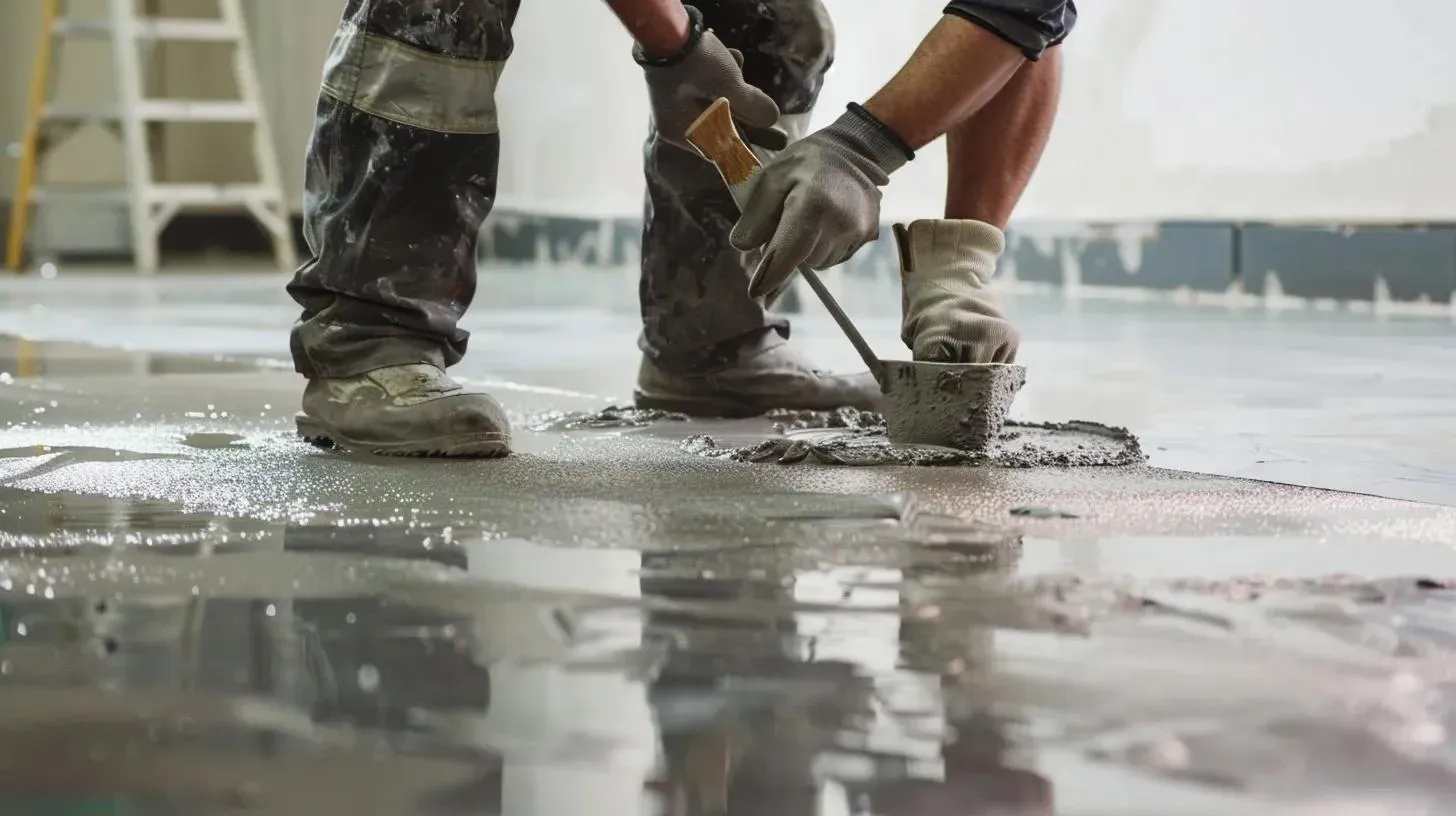
Installation involves thorough inspection, substrate repair, surface profiling, primer, base coat, optional decorative flake broadcasting, and final topcoat application. Correct installation is crucial for preventing issues like delamination, bubbling, and premature wear. Concrete preparation requires detailed inspection and a meticulously clean, properly profiled surface. Application demands precise mixing, vigilant pot-life management, and appropriate tools. Curing progresses from tack-free to full hardness within hours or days.
- Conduct thorough inspection and repair.
- Profile the concrete surface (diamond grinding/shot blasting).
- Apply primer and base coat, managing pot life.
- Broadcast decorative flakes (optional).
- Apply topcoat and allow to cure
Costs and Return on Investment (ROI)
Overall cost balances material expenses, labor, preparation, and potential downtime. ROI is realized through reduced maintenance, less frequent recoating, and minimized operational disruptions. While initial material costs for polyaspartic may exceed basicepoxy, a comprehensive lifecycle analysis often reveals a more favorable outcome due to shorter closure periods and superior long-term aesthetic retention. Key cost factors include substrate condition, system complexity, and labor. Polyaspartic flooring is a sound investment when rapid project turnaround, UV stability, and exceptional resistance are critical.
- Substrate Condition and Preparation: Extensive repairs or grinding will increase overall costs.
- Selected System: Factors like coating thickness, decorative flake additions, and slip-resistance treatments will add to the price.
- Access and Labor: Site accessibility, required closure times, and skilled labor rates all influence the final price.
In Summary
Polyaspartic floor coatings are a superior advancement for concrete surfaces, distinguished by rapid cure times, outstanding UV stability, and formidable resistance to abrasion and chemicals. While initial material investment might exceed traditional epoxy, reduced downtime, extended aesthetic lifespan, and minimal maintenance frequently translate into a lower overall cost of ownership and a compelling return on investment. Suited for diverse applications, from residential garages to demanding industrial warehouses, proper installation is critical to fully realizing the extensive benefits of this durable and versatile flooring system.
Explore our Polyaspartic Systems
Ready to Elevate Your Space?
Explore the transformative potential of polyaspartic coating to significantly enhance the durability and visual appeal of your environment.

